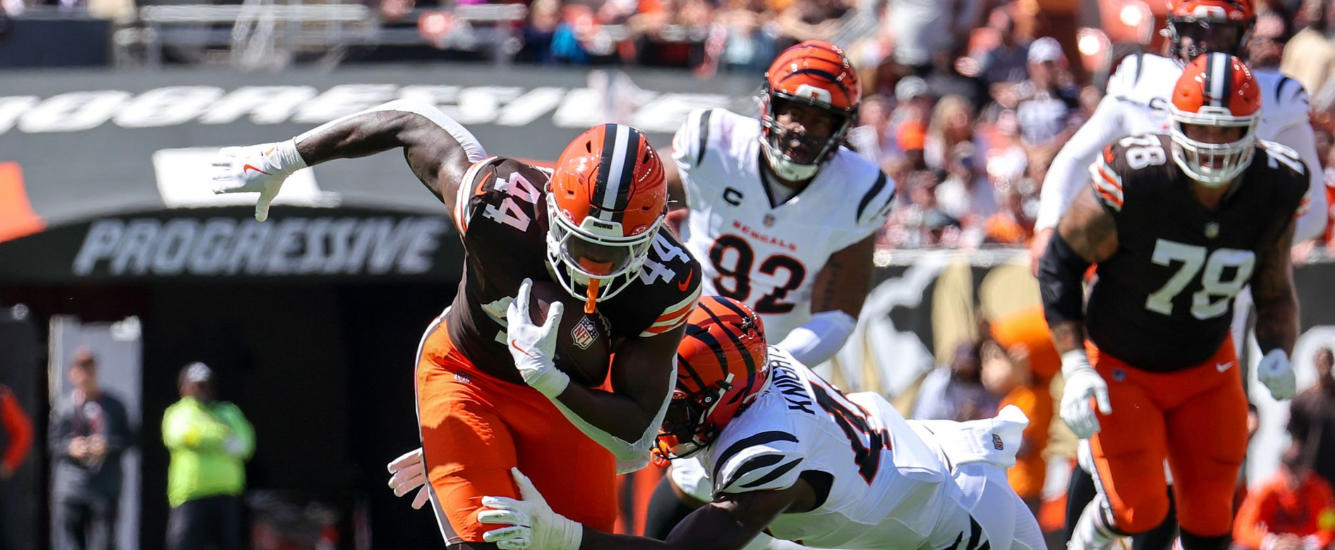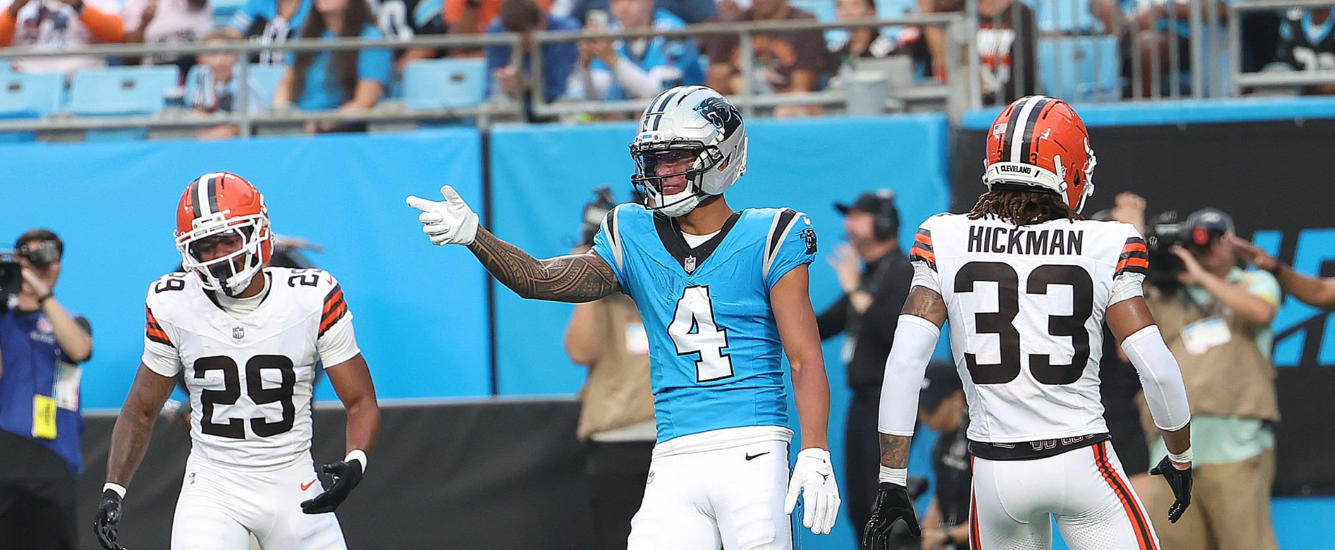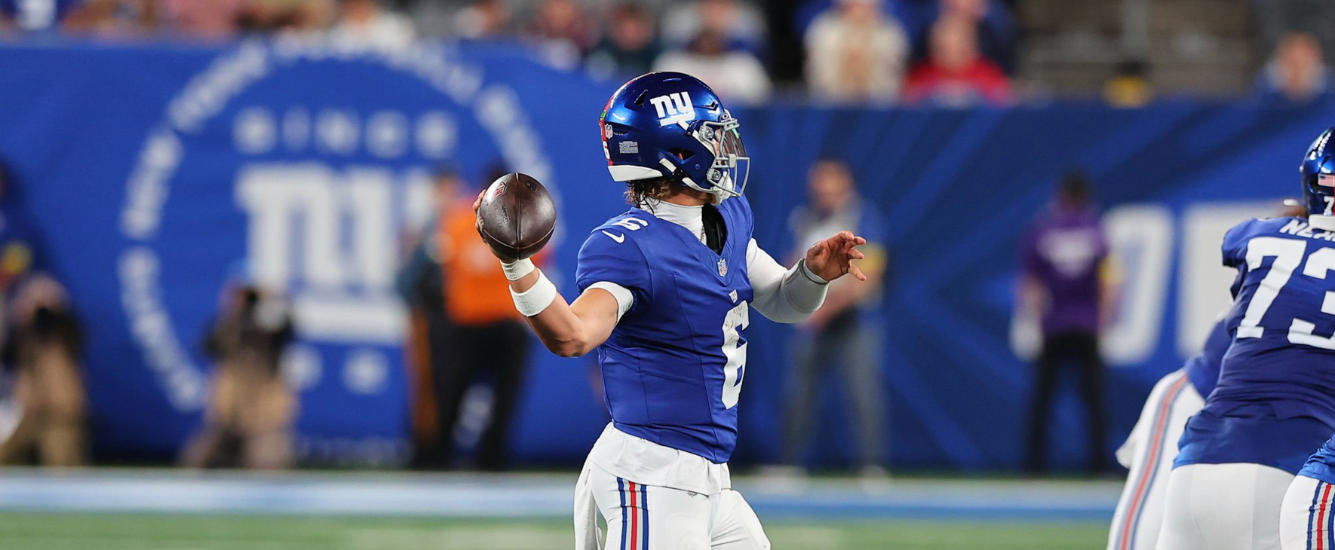The Wrong Read has had many lives — first as a reflection on insights from the RotoViz podcasts; then as a freeform space for exploring a variety of metrics and strategies. It will likely continue in that latter function, but at least for now — in season — it’s an in-depth matchup lookahead article.
Each week I’ll gather advanced stats from our tools to paint a picture of the upcoming week and offer some thoughts on how the games might unfold. My interest is in how the games will impact fantasy teams, and as such I’m looking mainly at the metrics that I think can help us predict how different teams and players will (or won’t) score fantasy points.
Because we are early in the season, the numbers you will see below are still balanced between late-season 2022 and early-season 2023. As we get deeper into 2023, the 2022 numbers will drop out.
Don’t miss the coverage of the early games in Part 1.
Cincinnati Bengals at Arizona Cardinals
Every week we say that, perhaps, this is the week in which Cincinnati will figure things out. Maybe this is the week Joe Burrow will finally find Ja’Marr Chase open for a couple of long touchdowns. Maybe this is the week the Bengals remember they have the best group of passing weapons in the league.
We might not be saying that last part this week — Tee Higgins will not play — but the rest of it is a refrain we can get behind in Week 5.

Arizona is a bottom-five team in EPA allowed, success rate allowed, and boom rate allowed. Only one team creates less pressure on opponent dropbacks. The Bengals, meanwhile, have overtaken the Vikings as the No. 1 team in dropbacks per game since the end of last season. When you see the way Cincinnati’s running game works, this comes as no surprise.
Although the Cardinals are almost as bad at stopping the run as they are against the pass, almost no team is as bad at running the ball on offense as the Bengals.

Only two teams are worse at picking up yards before contact, evading tackles, or turning carries into big plays. Only four have a lower rushing success rate.
If Cincinnati doesn’t decide this is the week to figure things out, then Arizona could cause trouble for the once-dominant Bengals. Cincinnati has an especially hard time stopping teams who can run the ball competently.

They are No. 27 in rushing success rate allowed. Only one team allows missed and broken tackles on a higher percentage of carries. Only four allow more yards after contact. James Conner is quietly No.3 in the NFL in rushing yards. Conner is the only player in the league with at least 30 carries who is above 10% in both broken tackle and missed tackle rate and is averaging at least 2.0 yards before contact. (Kenneth Walker is also above 10% in both tackle-related categories, but is averaging only 1.3 yards before contact. De’Von Achane meets all criteria but sits just below 30 carries.) The Cardinals’ offense as a whole ranks No. 5 in rushing success rate, No. 4 in yards before contact, and No. 6 in rushing FPOE.
While Arizona’s passing offense is also better than most expected, the Bengals are more disciplined against the pass.

They rank inside the top 10 in total passing game FPOE allowed, success rate allowed, and pressure rate. The Cardinals’ strong offensive line and receiver play has not yet translated into winning EPA numbers or fantasy efficiency. This doesn’t appear to be the most likely week for that translation to take place
Philadelphia Eagles at Los Angeles Rams
Cooper Kupp’s return to the Rams’ lineup happens just when they will need him most, as they face the defending NFC champions. It also comes at the perfect time for him to ease back into the NFL schedule, as the Eagles do not bring the scariest pass defense with them to L.A.

They are No. 25 in both FPOE allowed and passing boom rate allowed, and No. 21 in EPA per pass attempt allowed. The Rams come into the game with only a middling passing offense, but an exploitable matchup along with the return of Kupp could be exactly what’s needed to turn this Rams’ passing attack from just another surprisingly effective NFC West offense into a formidable offensive force. Puka Nacua has looked every bit the part of an elite NFL receiver in Kupp’s absence. It remains to be seen how the rookie’s opportunity might be impacted by the veteran’s return, but we can’t rule out the possibility that having Kupp on the field could actually benefit Nacua by pulling defensive attention off him. The Passing Game Matchup Rater prefers Tutu Atwell’s alignment history against Philadelphia, but all L.A. receivers have good matchups.

Nacua and Atwell have spent nearly equal time in the slot this year, which is where Kupp operates most frequently. It is expected that one or both of the youngsters will move outside. Against the Eagles this may not make a big difference, but watch this situation closely to understand how to react to new alignment trends as they come to light.
At least one reason teams have been keen to throw the ball against Philadelphia is that they are relatively weak at defending the pass. But another reason is that they are very strong against the run.

No team allows fewer yards after contact on average. The Eagles are also in the top 10 in rushing FPOE allowed, evasion rate allowed, and rushing success rate allowed. For all these reasons, only two teams face fewer rushing attempts per game than the Eagles. Even though Los Angeles is the No. 1 team in EPA per rush attempt and the No. 4 team in rushing success rate, Philadelphia will not make things easy.
Of course, there is another big reason Philadelphia faces so many dropbacks and few rushing attempts — they can score points in a hurry, even on the ground.

No team sports a higher rushing success rate than the Eagles, who are also No. 10 in yards before contact and No. 11 in EPA per rush attempt. The Rams, meanwhile, are the absolute worst at allowing yards before contact.
In at least one way, the yards before contact metric is slightly misleading. The leaders in YBC are nearly always quarterbacks. QBs often take off running only when big holes open up in front of them or on bootlegs and rollouts designed to get them in space. It’s not uncommon for rushing QBs to average more than 4 yards before first encountering a tackler. In 2022, among players with at least 50 carries, all of the top-12 players in yards before contact were QBs.
This means, of course, that teams like the Eagles that feature rushing QBs have an advantage in team-level yards before contact. However, this doesn’t necessarily mean we should discount Philadelphia’s ranking here. The YBC numbers are misleading if we’re trying to get an apples-to-apples comparison. But because Jalen Hurts is going to continue to run the ball, they are still a good predictor of how effective Philadelphia’s rushing attack might be. This is especially true against a team like L.A., who seems to have trouble tackling runners close to the line of scrimmage.
The Eagles’ passing attack has not looked as effective as their rushing attack, but there is still a good chance they will pick on a weak Rams’ pass defense.

While L.A. is good at limiting opponent fantasy efficiency, they generate little pressure with their pass rush and do not play tight coverage on opposing wide receivers. They rank just 23rd in passing boom rate allowed, meaning A.J. Brown and DeVonta Smith should have opportunities to make big plays, even if this isn’t a week in which we should expect the biggest fantasy outings.


















